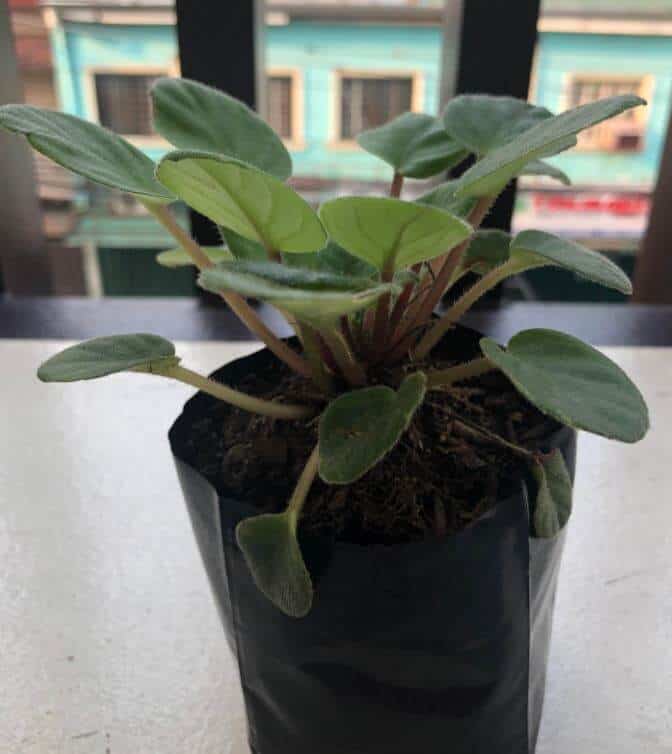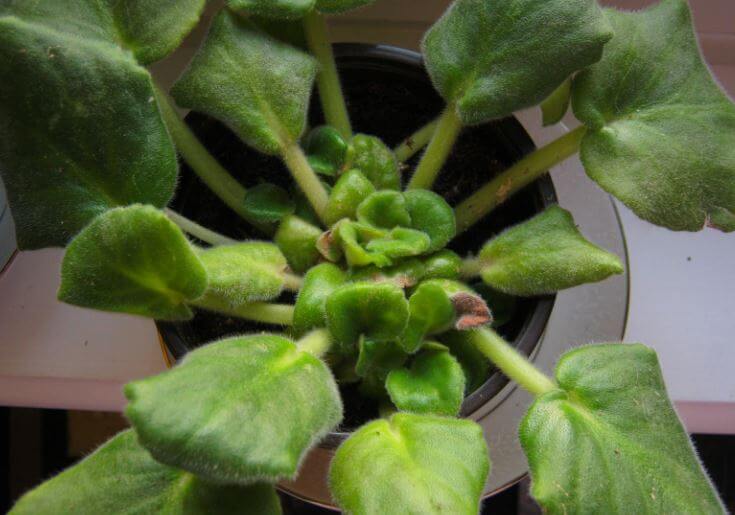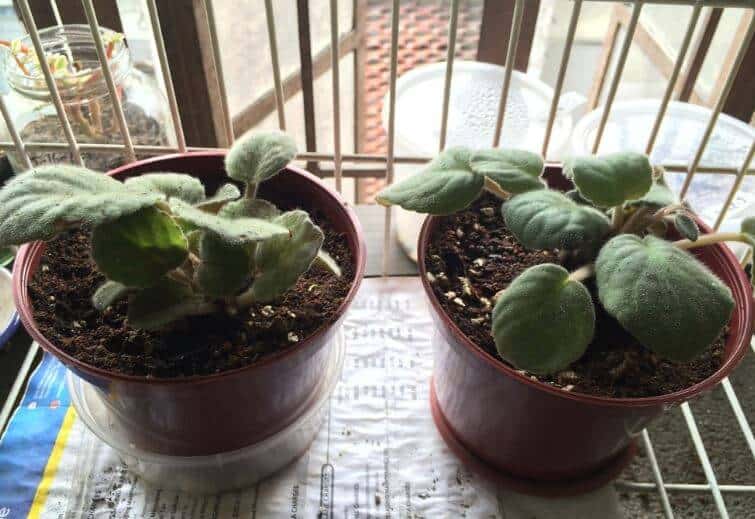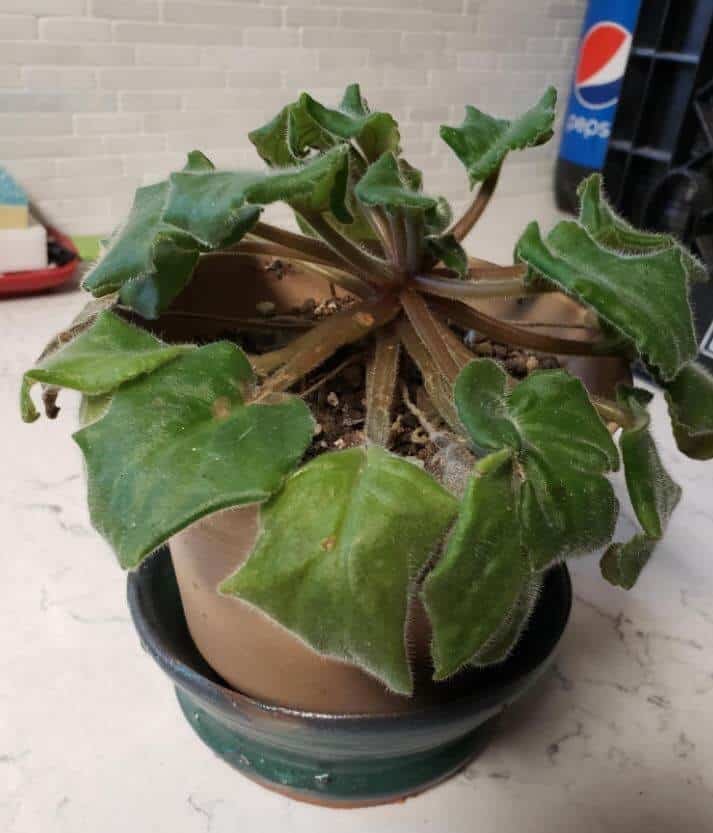Last Updated on October 3, 2023 by a Friendly Gardener
African violets can be the perfect houseplant. Although considered a bit fussy, they can flower year-round and boast gorgeous, fleshy, furry, and beautiful thick foliage. African violets have a vigorous growth habit in the form of a compact rosette. No plant part should appear limp, mushy, or discolored when healthy.
If your African violet begins to wilt, an issue must be resolved. These are resilient plants, so they can be revived if problems are caught early and treated. Many cases are quickly identified, while others may be less apparent.
The African Violet

The Saintpaulia Ionantha, commonly known as the African violet, belongs to the Gesneriaceaefamily. It is a perennial that can grow from six to nine inches in height and width. Popular for indoor cultivation, the African violet prefers moist but well-draining soil with an acidic to neutral pH, partial sun exposure, and higher humidity levels. These plants thrive in temperatures of 70°F and should be located in spots not subject to drafts. They can benefit from a biweekly feeding during their growing season in spring and summer. When watering, it’s best not to wet the leaves, opting instead to water directly into the soil. When cared for properly, an African violet plant can live an average of twenty years and sometimes longer.
Why Are My African Violet Leaves Wilting?

African violet leaves wilting can be the result of a variety of issues. Here, we examine the most common reasons.
• Overwatering
The most common reason for wilting African violet leaves is too much water. This plant is highly sensitive to being overwatered. They do not tolerate soggy soil or being wet all the time. Overwatering will lead to root rot and can be fatal. Saturated soil is the first sign of an overwatered plant. When the soil is water-laden, it is unable to dry quickly enough. When a plant is left to sit in soggy soil, leaf witling is a typical reaction, and if left for too long, the root system will begin to rot. If affected roots are not removed, the entire plant will start to rot and die.
What to do
When the soil is too wet, repot your plant immediately in a fresh African violet potting mix. When you remove your plant from the damp soil, scrutinize the root system. Trim these off if there are mushy, smelly, dark parts before repotting.
• Underwatering
When African violet foliage dries out, it will also wilt. If the plant container feels light and the soil has a powdery texture, chances are it is underwatered. If the plant remains underwatered for too long, the plant will begin to dry out and may turn brittle and brown. African violets need a regular watering schedule.
What to do
Give your plant some water if the soil bed is dry and develops African violet wilted leaves. Try watering from the bottom with tepid water. It’s important not to overwater. Your plant should perk up if it is watered regularly.
-
Inadequate Sunlight

If your plant is located in a spot that is too dark, it may become leggy with long stems to reach the light source. It may stop blooming and even stop growing.
What to do
If you suspect a lack of light, move your plant to a brighter spot. African violets need at least eight hours of light daily, but 10 to 16 hours is recommended. Sunlight exposure should be bright yet indirect. Windows without harsh sunlight exposure are fine or grow lights. African violets also require approximately 8 hours of daily darkness to flower.
-
Cold Water
African violets are not only sensitive to cold environmental temperatures but to water temperatures as well. Watering your plant with cold water can also send your African violet into shock. Foliage may begin to curl downward, contributing to a droopy appearance, especially if you wet the leaves with cold water during watering. Water can also cause brown spots on foliage.
What to do
If you use cold water once, your plant should be fine; however, repeated watering with cold water can harm the plant. Use tepid, room-temperature water. If necessary, let your water sit out overnight.
-
Pest Infestations

African violet wilted leaves can also be the result of a pest infestation. Examine your plant carefully on leaf topsides and undersides for evidence of insects. African violets are susceptible to spider mites, aphids, and mealybugs infestations. These pests will suck the sap and its nutrients from your plant. They weaken plants and will contribute to drooping foliage. When pest infestations are left untreated, they can be fatal.
What to do
Begin by isolating an infested plant so the pests don’t spread to other houseplants. Small insect infestations can be treated with a jet spray of warm water. Severe infestations require insecticidal soap or pesticide sprays and powders. Follow the instructions for dosage and application for the product you select.
-
Improper Environmental Temperature
The African violet originated in a tropical forest in eastern Africa. Still, they do not appreciate extreme heat or cold. When the room is too cold or hot, drooping or dry leaves may develop, and growth may be interrupted. If wilting leaves follow interrupted growth, consider the environmental temperature.
What to do
Move your plant to a room with an environmental temperature measuring between 65° and 80°F. These plants will manage temperatures slightly higher or lower, but only briefly.
-
Overfeeding
Your African violet plant will benefit from regular fertilization during its growing season in the spring and summer. However, too much fertilizer can cause root burn, brittle leaves, leaf burn, and wilted leaves.
It may also cause crystal buildup in and on the soil’s surface. If overfeeding continues for some time, the plant may die.
What to do
If you suspect overfertilization, the first thing to do is flush out your plant’s soil with tepid water. Permit the container to drain away all excess water and allow your plant a long rest before fertilizing anew.
In Conclusion

Various environmental or care routine issues can cause wilting African violet leaves. The sooner you identify the cause, the better your plant’s chances are for a full recovery. With a proper environment and care, your plant will reward you with lush foliage and delightful, colorful blooms all year.

